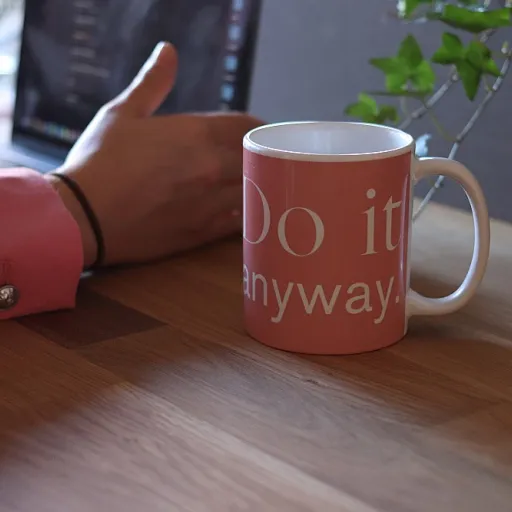
What is a 16 panel drug screen and why is it important?
Comprehensive drug screening: why it matters in modern hiring
In today’s hiring landscape, employers are increasingly turning to comprehensive drug screening methods to ensure workplace safety and compliance. The 16 panel drug screen stands out as one of the most thorough options available, offering a wide-ranging look at potential substance use. Unlike basic urine drug tests, this panel covers a broader spectrum of drugs, including both common and emerging substances. This approach helps organizations make informed decisions about candidates, especially in industries where safety and trust are paramount.
The 16 panel drug screen uses a test cup or dip device to analyze a urine sample for multiple substances at once. It can detect drugs such as THC marijuana, benzodiazepines, barbiturates, fentanyl, gabapentin, tramadol, and more. The process is straightforward: a candidate provides a urine sample, which is then tested using a panel drug test cup or dip. Results can be available quickly, especially with point care testing, but confirmation testing may be required for non-negative results.
Employers often order these tests as part of pre-employment screening or ongoing workplace drug testing programs. The goal is to identify potential risks related to drug use, which can impact health, safety, and productivity. With the rise of synthetic opioids like fentanyl and prescription drugs such as gabapentin and tramadol, the expanded panel offers a more complete picture than older, limited tests.
It’s important to note that the use of comprehensive drug screens brings its own set of challenges and legal considerations. As drug testing technology evolves, so do the substances being detected and the regulations surrounding them. For those interested in the broader context of investigative screening, you can learn more about asset investigation in background checks and how it complements drug testing in building a full candidate profile.
Ultimately, the 16 panel drug screen is a key tool for employers seeking to maintain a safe and compliant workplace. As we explore the specific substances detected and how these tests are used in hiring, it becomes clear why comprehensive screening is becoming the new standard in background checks.
Substances detected in a 16 panel drug screen
Breaking Down the Substances Detected
A 16 panel drug screen is designed to provide a comprehensive overview of recent drug use by testing for a wide range of substances in a single urine drug test. This type of panel drug test is often used in health and employment settings, offering more coverage than standard 5 or 10 panel cups. The test cup typically uses a dip method or point care technology, allowing for quick and reliable results. Here’s what a typical 16 panel drug screen can detect:- THC (Marijuana): The psychoactive component in cannabis, commonly tested as thc marijuana.
- Cocaine (COC): Detected as bzo coc in some test cups.
- Opiates (OPI): Includes morphine and codeine, sometimes listed as opi oxy for oxycodone detection.
- Amphetamines (AMP): Stimulants, often found in prescription medications.
- Barbiturates (BAR): Sedatives, detected as amp bar on some cup panels.
- Benzodiazepines (BZO): Common anti-anxiety medications.
- Methamphetamines: Potent central nervous system stimulants.
- Phencyclidine (PCP): A hallucinogenic drug.
- Methadone: Used for pain management and opioid dependence.
- Propoxyphene: An opioid pain reliever.
- Ecstasy (MDMA): A synthetic drug with stimulant and hallucinogenic properties.
- Oxycodone: A strong prescription opioid, sometimes listed as opi oxy.
- Buprenorphine: Used in opioid addiction treatment.
- Tramadol: A prescription painkiller, detected as tramadol drug.
- Fentanyl: A powerful synthetic opioid, tested as fentanyl drug or etg fen in some cups.
- Gabapentin: An anticonvulsant, increasingly included due to its misuse potential.
How employers use the 16 panel drug screen in hiring
How employers integrate 16 panel drug screens into hiring
Employers are increasingly turning to the 16 panel drug screen as part of their pre-employment background check process. This comprehensive test cup covers a wide range of substances, including thc marijuana, fentanyl drug, gabapentin, tramadol drug, benzodiazepines, barbiturates, and more. The goal is to ensure workplace safety, protect company reputation, and comply with industry regulations. The process usually starts with an order for a urine drug test, often using a point care cup or dip method. Candidates provide a urine sample, which is then tested for up to 16 different drugs. The test cups are designed for quick results, but positive findings may require confirmation through laboratory analysis. Employers rely on these results to make informed hiring decisions, especially in industries where health and safety are critical.- Screening for specific roles: Safety-sensitive positions, such as those involving machinery or transportation, often require more extensive drug testing. The 16 panel drug screen helps detect substances like opi oxy, amp bar, bzo coc, and others that could impair performance.
- Policy compliance: Many organizations have strict drug-free workplace policies. Using a comprehensive panel drug test ensures consistency and fairness in enforcement.
- Reducing liability: By screening for a broad spectrum of drugs, employers can reduce the risk of workplace incidents and potential legal claims.
Challenges and controversies in comprehensive drug screening
Complexities in Accurate Detection and Interpretation
Comprehensive drug testing, like the 16 panel drug screen, brings a higher level of detail to background checks. However, this depth also introduces new challenges. One key issue is the risk of false positives or negatives. For example, certain medications or foods can sometimes trigger a positive result for substances like amp bar or bzo coc. This can lead to confusion and the need for confirmation testing, which delays the hiring process and may impact candidates unfairly.
Emerging Substances and Test Limitations
The landscape of drug use is constantly evolving. Substances such as gabapentin, fentanyl, and tramadol drug are increasingly detected in urine drug tests, but not all test cups or dip tests are equally sensitive. Some rapid test cups may miss newer synthetic drugs or designer substances, while others may not distinguish between legal and illegal use, especially with prescription medications like benzodiazepines or barbiturates. This makes it difficult for employers to interpret results accurately and fairly.
Privacy, Consent, and Candidate Experience
Comprehensive screening with a 16 panel drug test can raise privacy concerns. Candidates may feel uncomfortable with the breadth of substances screened, especially when the test includes items like thc marijuana, cup etg, or etg fen. Employers must balance the need for a safe workplace with respect for individual privacy and health information. Clear communication about what the panel drug test covers and why it is ordered is essential to maintain trust and transparency.
Operational and Logistical Hurdles
- Sample Collection: Ensuring the integrity of urine samples, especially with point care testing or when using test dip methods, requires strict protocols to prevent tampering.
- Result Management: Handling a large volume of test cups and interpreting results from multiple panels (opi oxy, amp bar, etc.) can strain HR and compliance teams.
- Confirmation Testing: When a positive result is found, confirmation by a certified lab is often needed, adding time and cost to the process.
Controversies in Drug Screening Policies
There is ongoing debate about the scope of drug tests in the workplace. Some argue that screening for substances like thc or prescription drugs may not always be relevant to job performance, especially as laws and social attitudes shift. Others point out that comprehensive panels help identify potential health or safety risks. The challenge for employers is to create policies that are both effective and fair, while staying compliant with evolving regulations.
Legal considerations and compliance for background checks
Staying Compliant with Drug Testing Laws
Employers who order a 16 panel drug screen as part of their background check process must navigate a complex legal landscape. Drug testing, especially with comprehensive panels that detect substances like fentanyl, gabapentin, tramadol, barbiturates, benzodiazepines, and THC marijuana, is regulated at both federal and state levels. Regulations can impact everything from the type of test cup used to the way results are confirmed and reported.Key Legal Requirements for Drug Screening
- Consent and Notification: Most jurisdictions require employers to obtain written consent before collecting a urine drug sample or using a test dip or cup panel. Employees or candidates should be informed about which drug tests will be performed and what substances are included in the panel drug screen.
- Accuracy and Confirmation: If a test cup or point care device returns a positive result, confirmation testing—often by a certified laboratory—is usually required. This is especially important for substances like bzo coc, opi oxy, amp bar, and fentanyl drug, where false positives can have serious consequences for employment decisions.
- Confidentiality: Health information, including drug test results, must be handled confidentially. Employers should have clear policies on who can access urine drug screen data and how long test cups or records are retained.
- Non-Discrimination: Drug testing policies must be applied consistently to avoid claims of discrimination. Special care is needed with substances like gabapentin or tramadol drug, which may be legally prescribed.
- State-Specific Laws: Some states restrict testing for certain substances, such as THC marijuana, or have unique requirements for confirmation and reporting. Employers must stay updated on these evolving regulations to ensure compliance.
Industry Standards and Best Practices
To reduce legal risks, many organizations follow established guidelines from agencies like the Substance Abuse and Mental Health Services Administration (SAMHSA) or the Department of Transportation (DOT) when conducting drug testing. Using standardized test cups, maintaining chain-of-custody procedures, and ensuring timely confirmation of positive results are all considered best practices. Employers should also review their drug testing policies regularly, especially as new substances like etg fen or cup etg are added to panel drug screens. This helps ensure that the testing process remains fair, accurate, and legally defensible.Managing Disputes and Appeals
When a candidate or employee disputes a drug screen result, employers must have a clear process for review and appeal. This often involves retesting or providing an opportunity for the individual to explain a positive result, particularly for prescription medications. Proper documentation and adherence to legal requirements are essential to avoid liability. Staying compliant with drug testing laws is not just about avoiding penalties—it’s about protecting the rights of candidates and employees while maintaining a safe and productive workplace. As drug panels become more comprehensive, ongoing education and policy updates are crucial for employers and background check providers.Future trends in drug screening for background checks
Emerging Technologies and Shifting Priorities in Drug Screening
Drug screening is evolving rapidly, especially as workplace safety and compliance demands grow. The 16 panel drug screen, which detects substances like THC marijuana, fentanyl drug, gabapentin, tramadol drug, benzodiazepines, barbiturates, and more, is at the center of these changes. Employers and testing providers are adapting to new substances, improved test cups, and advanced confirmation methods.
- Point-of-care testing: There is a clear trend toward point care solutions, such as the test cup and test dip formats. These allow for immediate urine drug results, reducing wait times and streamlining hiring processes.
- Expanded panels: As new drugs like fentanyl and gabapentin become more common, panel drug tests are being updated. The 16 panel cup now often includes substances that were rarely screened for in the past, such as tramadol, bzo coc, opi oxy, and amp bar.
- Digital integration: Test results are increasingly managed through digital platforms, improving accuracy and record-keeping. This shift helps employers order, track, and confirm drug test results more efficiently.
- Focus on synthetic and prescription drugs: With the rise in prescription drug misuse, tests now target substances like oxycodone, barbiturates, and synthetic opioids. This ensures a broader safety net for employers and addresses health concerns in the workplace.
Balancing Privacy, Accuracy, and Compliance
As drug testing technology advances, so do concerns about privacy and legal compliance. Employers must ensure that their drug testing policies align with current regulations and respect individual rights. The use of comprehensive urine drug screens, including the 16 panel cup panel, requires careful attention to state and federal laws, especially as substances like THC and etg fen (ethyl glucuronide) are treated differently across regions.
Another challenge is the accuracy of rapid tests versus laboratory confirmation. While point care test cups and dip tests provide fast results, confirmation testing remains essential for legal defensibility and fairness.
Looking Ahead: What to Expect
Future trends suggest that drug testing will continue to expand in scope and sophistication. Expect to see:
- More sensitive test cups and panels for emerging drugs
- Integration of AI and data analytics for result interpretation
- Greater emphasis on health and wellness, not just compliance
- Continued debate over substances like THC marijuana as laws change
Staying informed about these trends is crucial for employers, HR professionals, and anyone involved in background checks. The landscape of drug testing is dynamic, and understanding the latest developments in panel drug screens, urine drug tests, and confirmation processes will help organizations maintain safe and compliant workplaces.












